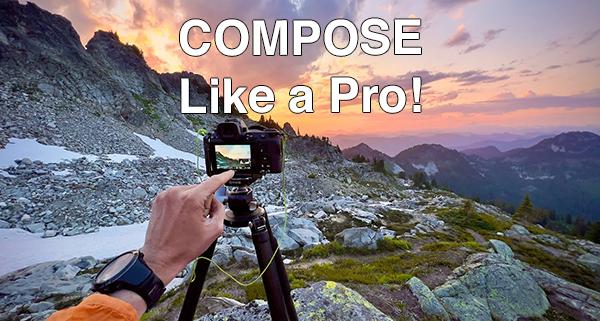5 Pro Landscape Framing Tricks That You Don't Know (VIDEO)

Well-composed landscape photographs are often difficult to achieve—especially in scenes with several important elements. Sure, there are a variety of common guidelines, like the Rule of Thirds and the importance of leading lines, but you're undoubtedly familiar with those.
Today's tutorial goes in a different direction with five composition secrets "that you've never heard of before" from an accomplished pro who says, "learn my step-by-step framework and you'll start improving your landscape photography compositions today."
Instructor Dave Morrow is a full-time wilderness photographer who spends nine month a year living in a tent and chasing light, so he knows whereof he speaks. His says he uses these technique daily, and so can you whether you're deep in the outback or closer to home. This behind-the-scenes episode takes place during a five-day excursion as Morrow hikes through mountainous terrain.

Morrow provides a link to his free PDF Guide that you can download to your camera and have it handy while shooting in the field. The first thing he does when arriving on location is to carefully scrutinize what he sees, based upon "an algorithm I have in my mind" that helps him decide where to begin. Based upon the following rules he developed himself, Morrow then says either "heck yeah" or "no."
Once Morrow determines the optimum center of attention in a scene he then looks for a complementary foreground element on the opposite side of the frame. This enables him to capture images with compelling balance that guides a viewer's eyes through the frame. As he explains, "If everything is just on one side of the image there's no point in having the other side of the scene in the photo.
He calls this "the offset technique" and it's very helpful for creating a dynamic sense of scale. As you'll see, this approach is even more effective when you're able to include complimentary colors in the two main zones of an image. Then you'll achieve what Morrow refers to as a "square color harmony."

Morrow also demonstrates a super simple "interestingness grid" that's responsible for many of his most compelling images. You don't need to overthink this one, because it's intended to be a rough and versatile guideline. This one is sort of like a modified Rule of Thirds with a bit more sophistication.
At this point you're barely halfway through the great tricks you'll learn. And once you understand all six they'll become part of a composition algorithm in your brain too!. Morrow's instructional YouTube channel is full of helpful tips and tricks like these, so be sure to pay a visit and see what's available.
And don't miss the tutorial we posted recently, explaining a "secret" technique for sharpening landscape photos that another pro developed himself.
- Log in or register to post comments














































